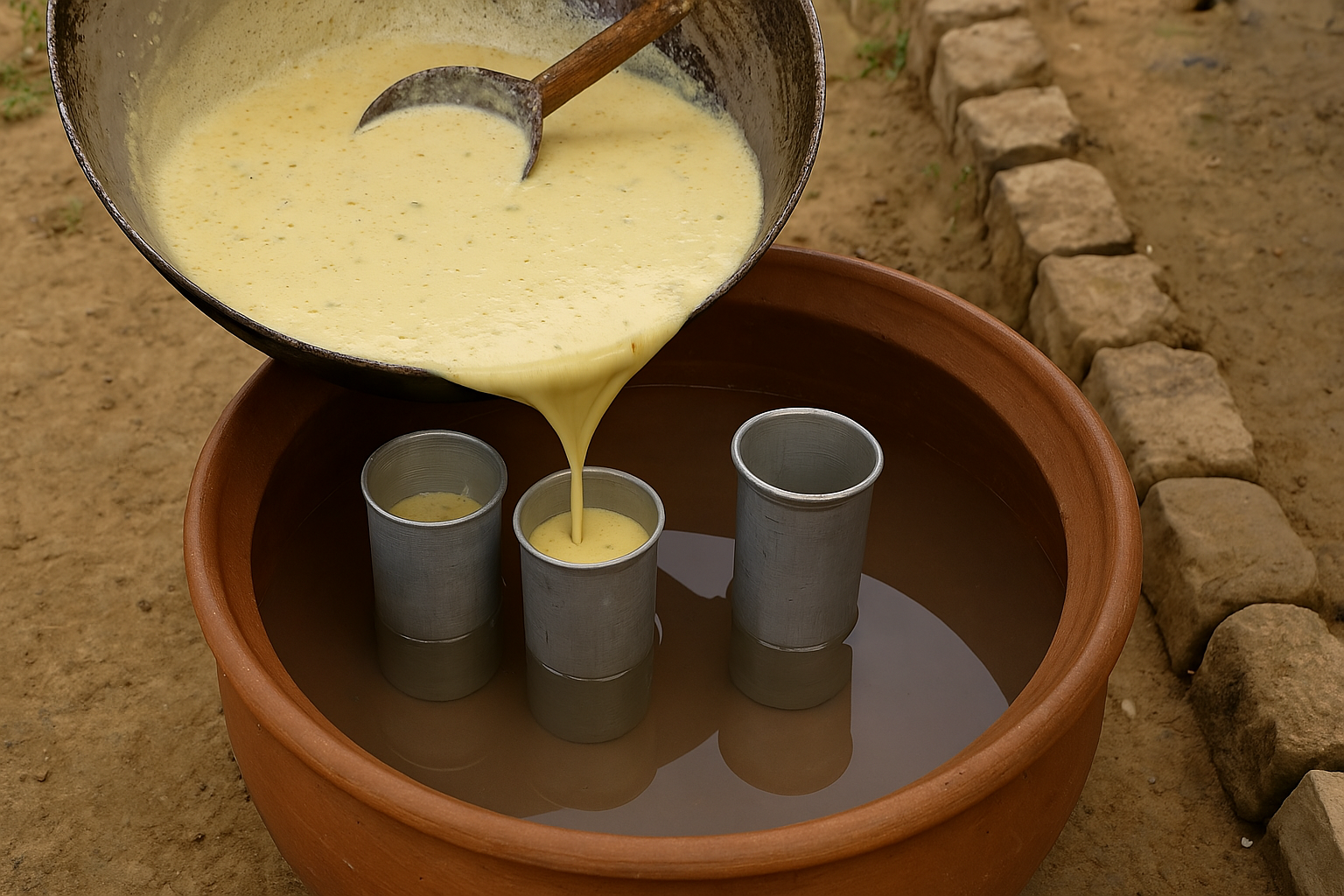Introduction
In a world full of modern appliances and shortcuts, it’s truly refreshing to see age-old culinary traditions still thriving. One such example is making kulfi — a creamy, frozen dessert beloved across South Asia — without the use of a refrigerator or freezer. The video by Village Food Secrets beautifully showcases how villagers craft this delicious treat using only natural resources and traditional techniques.
What is Kulfi?
Kulfi is often referred to as traditional Indian ice cream, though its texture is denser and creamier. Unlike modern ice creams, kulfi is made by slowly simmering milk until it’s reduced and thickened, then flavored with cardamom, nuts, or saffron, poured into molds, and frozen.

Step-by-Step Village-Style Kulfi Making
- Boiling the Milk The process begins with boiling a large quantity of fresh milk over a wood-fired stove. This is done in a large open pot, and the milk is stirred continuously to prevent burning and to help it thicken. As the milk reduces, it takes on a rich, creamy texture that forms the base of kulfi.
- Sweetening and Flavoring Once the milk reaches the right consistency, sugar is added to taste. Traditional flavorings like crushed cardamom pods and chopped almonds or pistachios are mixed in, adding both aroma and crunch. The result is a sweet, fragrant mixture full of natural flavors.
- Pouring into Molds The thickened mixture is poured into metal or earthen kulfi molds. In some cases, villagers even use makeshift containers like small steel glasses or clay cups, staying true to their resourceful ways.
- Natural Freezing Without a Fridge Here comes the most fascinating part — setting the kulfi without a freezer. The molds are placed in an insulated earthen pot filled with a mixture of salt and ice, or cool water sourced from deep village wells. The salt helps lower the freezing point of water, effectively cooling the molds and solidifying the kulfi. In some cases, the molds are simply placed in shaded, naturally cool areas overnight.
- Ready to Serve After several hours, the kulfi is fully set and ready to be served. It is typically unmolded by dipping the container briefly in warm water, allowing the kulfi to slide out smoothly. The result is a rustic, rich dessert bursting with flavor and heritage.
Why This Method is Special
Eco-Friendly: No electricity or machines are used — just firewood, nature, and time.
Authentic Taste: The slow-cooked milk and natural setting give the kulfi a unique depth of flavor.
Cultural Significance: This method preserves a piece of culinary history and showcases the simplicity and wisdom of village life.
Conclusion
This traditional kulfi-making process is more than just a recipe; it’s a story of sustainability, patience, and connection to roots. Watching the video is like stepping into a simpler world where food is made with love and care, not haste. If you ever get the chance, try making kulfi the village way — it’s an experience you won’t forget.

